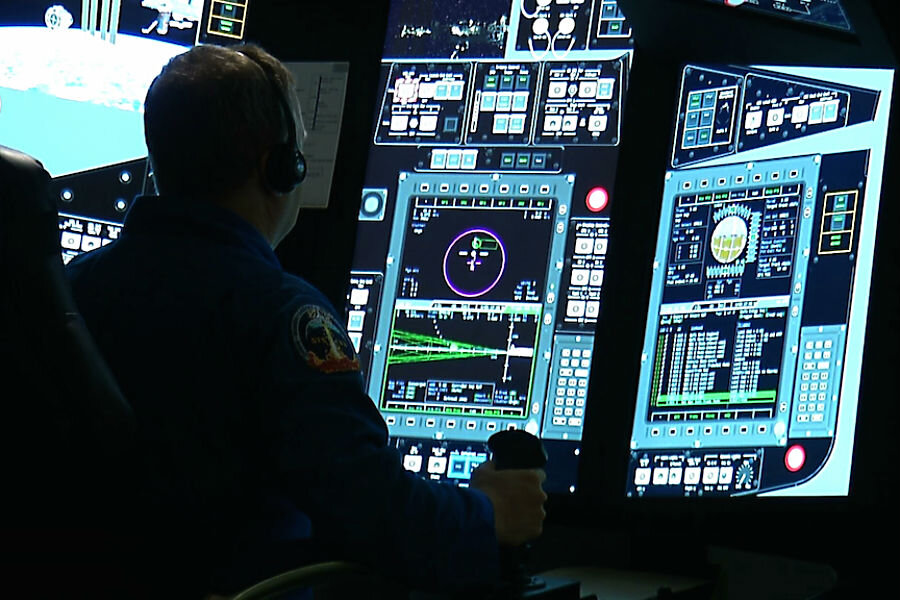NASA astronauts take Boeing shuttle simulator for test drive
Loading...
While the National Aeronautics and Space Administration (NASA) space shuttle program has been grounded for years, its astronauts are still working with new training technology to prepare for the next wave of space travel.
"This is the next really exciting chapter for our country and our space program," astronaut Sunita Williams told the Associated Press. "It refocuses on what I think is really important – planning for the next generations and thinking of their future."
The female spacewalk record holder, along with fellow astronaut Eric Boe, is testing NASA-backed training simulators manufactured by the Boeing Company at its St. Louis facility. The two space vets are practicing the docking of Boeing's CST-100 Starliner on the International Space Station (ISS).
"These Crew Part-Task Trainers form the foundational capability for the astronauts to interact with the Starliner," said Boeing Crew and Mission Systems deputy project manager Chris Ferguson in a NASA release. "We'll continue to build on these training systems and the momentum leading to flight."
Boeing is providing the spacecraft and Crew Part-Task Trainers, as NASA has put its near-Earth efforts on the back burner in an effort to further its Mars missions. Boeing and Space Exploration Technologies Corporation (SpaceX) are contracted to take over the role of transport to the ISS as the Mars initiatives continue development.
"If you think of Mars as the pinnacle of Everest (and) low-Earth orbit as base camp, the commercial companies that service low-Earth orbit are the sherpas that take things back and forth," Mr. Ferguson told the AP.
The touchscreen simulators will provide Ms. Williams, Mr. Boe, and other spaceflight hopefuls with hours of hand-on practice on all phases of the shuttle launch and docking process. The machines will be relocated to a NASA space center in Houston later this year to allow for daily use by the astronauts.
"These simulators... are more versatile than previous spacecraft trainers," Williams said in the NASA brief. "We can run multiple simulations by just changing software and then put that same software into a bigger crew simulator, which we will use to train the whole crew for a spaceflight."
The new training modules are a far cry from NASA's first simulators. Basic units were utilized before the first-ever human spaceflights as part of NASA's Project Mercury and Project Gemini in the late 1950s and early 1960s, but the newest appliances are more advanced and specified to Starliner operations. The agency says other simulators will come into play closer to launch, and will include training for specific aspects of the mission such as boarding and exiting the spacecraft and eventually involving multiple astronauts.
"The simulations are important for the flight tests, because this is the place to put it all together," Boe said in the NASA release. "Think of the part-task trainer as our training wheels. As we get more familiar with the systems, the training wheels will come off and we will start advancing to the next systems. Eventually, we will work with another crew member, then with the whole flight control team."
Both Boeing and SpaceX say their ISS flights should commence by late 2017.
This report includes material from the Associated Press.








